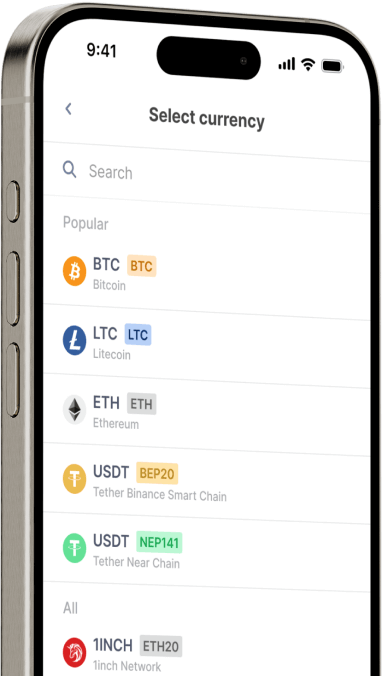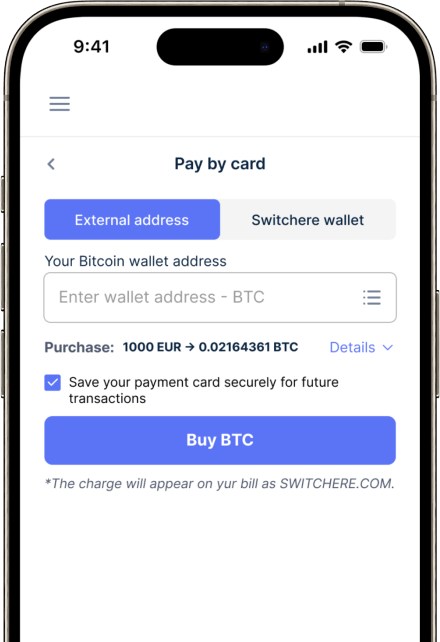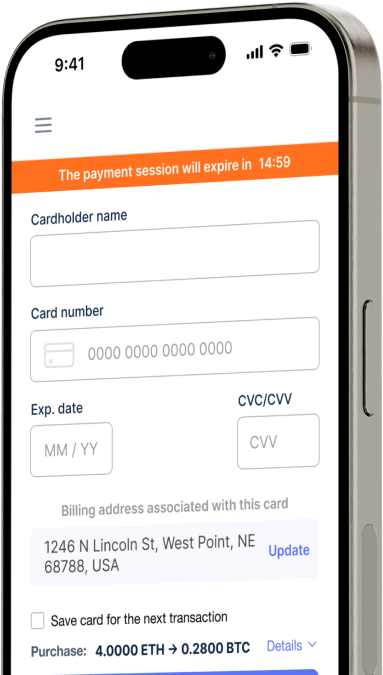Convertire
Singapore Dollar (SGD) in Avalanche (AVAX) istantaneamente
Acquistate facilmente Avalanche (AVAX) con Singapore Dollar (SGD) su Switchere e beneficiate di transazioni rapide e sicure.
Circa
Avalanche (AVAX)
Avalanche (AVAX) è una piattaforma tecnologica blockchain altamente scalabile progettata per ospitare applicazioni decentralizzate (dApp) e facilitare la creazione di reti blockchain personalizzate. Il suo scopo principale è quello di risolvere il trilemma della blockchain offrendo un elevato throughput, una bassa latenza e una robusta decentralizzazione. Avalanche raggiunge questo obiettivo grazie al suo nuovo meccanismo di consenso, una famiglia di protocolli (Snowman, ecc.) costruiti su una base di proof-of-stake (PoS), che consente la finalizzazione delle transazioni in meno di un secondo. Ciò la rende un'infrastruttura di asset digitali interessante per le applicazioni DeFi più esigenti e per le soluzioni di livello aziendale che richiedono sicurezza crittografica.
Una caratteristica distintiva fondamentale è l'architettura a sottoreti di Avalanche, che consente agli sviluppatori di lanciare blockchain su misura, specifiche per le applicazioni, che possono avere le proprie regole, macchine virtuali (compresa la compatibilità EVM sulla C-Chain) e tokenomics. Queste sottoreti possono operare in modo indipendente o condividere la sicurezza con la rete principale. Il token di utilità nativo, AVAX, svolge un ruolo cruciale all'interno di questa rete decentralizzata. È usato per pagare le commissioni delle transazioni, per proteggere la rete attraverso il picchettamento da parte dei validatori e come unità di conto fondamentale tra le varie sottoreti. Avalanche è riconosciuta come una piattaforma di smart contract di primo livello, che guida l'innovazione nell'infrastruttura Web3 e promuove un ecosistema on-chain diversificato.
Acquistare altre 150+ criptovalute per Singapore Dollar (SGD)
Altre monete per Singapore Dollar (SGD)
-
SGD per ZRX
-
SGD per 1INCH
-
SGD per AAVE
-
SGD per ACH
-
SGD per ALGO
-
SGD per TLM
-
SGD per ANKR
-
SGD per APE
-
SGD per NFT
-
SGD per API3
-
SGD per APT
-
SGD per ARPA
-
SGD per AUDIO
-
SGD per AVAX
-
SGD per AVAX
-
SGD per AXS
-
SGD per BADGER
-
SGD per BAL
-
SGD per BNT
-
SGD per BAT
-
SGD per BNB
-
SGD per BSW
-
SGD per BSV
-
SGD per BLUR
-
SGD per BONE
-
SGD per CTSI
-
SGD per CELR
-
SGD per CELO
-
SGD per CEL
-
SGD per LINK
-
SGD per CHZ
-
SGD per CHR
-
SGD per C98
-
SGD per COMP
-
SGD per CFX
-
SGD per PEOPLE
-
SGD per CVX
-
SGD per ATOM
-
SGD per CTC
-
SGD per CRV
-
SGD per DAI
-
SGD per DASH
-
SGD per MANA
-
SGD per DENT
-
SGD per DGB
-
SGD per DYDX
-
SGD per XEC
-
SGD per EOS
-
SGD per ETC
-
SGD per ENS
-
SGD per ETHW
-
SGD per FET
-
SGD per FIL
-
SGD per FLOKI
-
SGD per GALA
-
SGD per GNO
-
SGD per ONE
-
SGD per HBAR
-
SGD per HOT
-
SGD per HOOK
-
SGD per ICX
-
SGD per ILV
-
SGD per IMX
-
SGD per INJ
-
SGD per ICP
-
SGD per IOST
-
SGD per IOTX
-
SGD per JASMY
-
SGD per JST
-
SGD per KAVA
-
SGD per KCS
-
SGD per KSM
-
SGD per KNC
-
SGD per LDO
-
SGD per LQTY
-
SGD per LPT
-
SGD per LOOKS
-
SGD per LRC
-
SGD per LUNA
-
SGD per MKR
-
SGD per MASK
-
SGD per EGLD
-
SGD per ALICE
-
SGD per NEAR
-
SGD per XEM
-
SGD per NEXO
-
SGD per NOT
-
SGD per NMR
-
SGD per OKB
-
SGD per OMG
-
SGD per ONT
-
SGD per EDU
-
SGD per OP
-
SGD per OGN
-
SGD per CAKE
-
SGD per PAXG
-
SGD per PENDLE
-
SGD per DOT
-
SGD per POL
-
SGD per QTUM
-
SGD per QNT
-
SGD per RDNT
-
SGD per XRD
-
SGD per RVN
-
SGD per REN
-
SGD per RSR
-
SGD per RLC
-
SGD per RPL
-
SGD per SFP
-
SGD per SHIB
-
SGD per SKL
-
SGD per SXP
-
SGD per STND
-
SGD per STG
-
SGD per XLM
-
SGD per GMT
-
SGD per STORJ
-
SGD per STMX
-
SGD per SUSHI
-
SGD per SNX
-
SGD per USDT (Polygon)
-
SGD per USDT (AVAC)
-
SGD per USDT (BEP20)
-
SGD per USDT (ERC20)
-
SGD per USDT (SPL)
-
SGD per USDT (NEP141)
-
SGD per USDT (FA2)
-
SGD per USDT (TRC20)
-
SGD per USDT (JETTON)
-
SGD per XTZ
-
SGD per GRT
-
SGD per SAND
-
SGD per TFUEL
-
SGD per THETA
-
SGD per RUNE
-
SGD per TON
-
SGD per TUSD (BEP20)
-
SGD per TUSD (TRC20)
-
SGD per TWT
-
SGD per UOS
-
SGD per UMA
-
SGD per UNI
-
SGD per USDC (Polygon)
-
SGD per USDC (SPL)
-
SGD per USDC (OP)
-
SGD per USDC (BEP20)
-
SGD per USDC (AVAC)
-
SGD per USDC (ARB)
-
SGD per USDC (ERC20)
-
SGD per VET
-
SGD per VRA
-
SGD per WAXP
-
SGD per WOO
-
SGD per WLD
-
SGD per WBTC
-
SGD per WMINIMA
-
SGD per XDC
-
SGD per YFI
-
SGD per YGG
-
SGD per ZIL
Come acquistare gli Avalanche (AVAX)
Domande frequenti
-
Quali sono i metodi più comuni per acquistare Avalanche (AVAX) con il dollaro di Singapore (SGD)?
Per acquistare AVAX con SGD, puoi utilizzare un exchange di criptovalute che funge da on-ramp fiat per gli utenti di Singapore. I metodi di pagamento comuni includono i trasferimenti FAST, PayNow o gli acquisti con carta di debito/credito. Queste piattaforme richiedono la conformità KYC/AML. Una volta acquistato, l'AVAX viene solitamente depositato nel tuo wallet sulla C-Chain di Avalanche, pronto per l'uso nell'ecosistema DeFi.
-
Quali sono i vantaggi dell'architettura Subnet di Avalanche per gli investitori in SGD?
Le Subnet di Avalanche consentono la creazione di blockchain personalizzate e specifiche per un'applicazione. Per un investitore in SGD che possiede AVAX, questo significa accesso a un ecosistema diversificato di progetti (come giochi o applicazioni aziendali) che possono operare con le proprie regole e strutture di commissioni senza congestionare la rete principale. Ciò aumenta l'utilità delle loro partecipazioni in AVAX, poiché AVAX è spesso richiesto per lo staking per convalidare queste Subnet, offrendo potenzialmente ricompense.
-
Quali sono le commissioni tipiche per la conversione di SGD in AVAX su un exchange di criptovalute?
Le commissioni per le transazioni SGD/AVAX sono composte da diverse parti. In primo luogo, potrebbe esserci una commissione di deposito per i tuoi SGD, che varia a seconda del metodo di pagamento (i trasferimenti FAST sono spesso più economici delle carte di credito). In secondo luogo, l'exchange addebiterà una commissione di trading (commissione maker/taker) basata sul libro degli ordini. Infine, quando prelevi i tuoi AVAX su un wallet non-custodial, pagherai una commissione di gas della rete, che sulla C-Chain di Avalanche è denominata in AVAX ed è generalmente bassa grazie alla sua elevata scalabilità.
-
Perché la C-Chain di Avalanche è importante quando si scambia la coppia SGD/AVAX?
La C-Chain (Contract Chain) di Avalanche è la blockchain compatibile con EVM dove vengono eseguiti gli smart contract e le applicazioni DeFi. Quando acquisti AVAX con SGD per fare trading o per la DeFi, i tuoi asset saranno quasi sempre sulla C-Chain. Questo accesso diretto ti permette di interagire immediatamente con dApp, pool di liquidità e marketplace NFT all'interno dell'ecosistema Avalanche, noto per la sua elevata velocità di transazione e bassa latenza.
-
In che modo il protocollo di consenso di Avalanche garantisce una rapida liquidazione da SGD ad AVAX?
Avalanche utilizza un innovativo protocollo di consenso (Snowman) che raggiunge la finalità della transazione in meno di un secondo. Quando converti SGD in AVAX su un exchange, il successivo trasferimento on-chain al tuo portafoglio digitale viene confermato quasi istantaneamente. Questa rapida finalità è un vantaggio tecnico fondamentale, che minimizza il periodo di attesa e il rischio associato alle fluttuazioni di prezzo durante la conferma della transazione, cruciale per un trading sicuro ed efficiente.
-
Quali sono le migliori pratiche di sicurezza per conservare gli AVAX acquistati con SGD?
Per una conservazione sicura, è vivamente consigliato spostare i tuoi AVAX dall'exchange di criptovalute a un portafoglio digitale non-custodial in cui controlli le chiavi private. Le opzioni includono portafogli hardware per la massima sicurezza o portafogli software affidabili compatibili con la C-Chain di Avalanche. Controlla sempre due volte l'indirizzo di destinazione prima di inviare e sii consapevole che AVAX esiste su più chain (X-Chain, P-Chain, C-Chain); per la DeFi, utilizzerai principalmente l'indirizzo della C-Chain.




